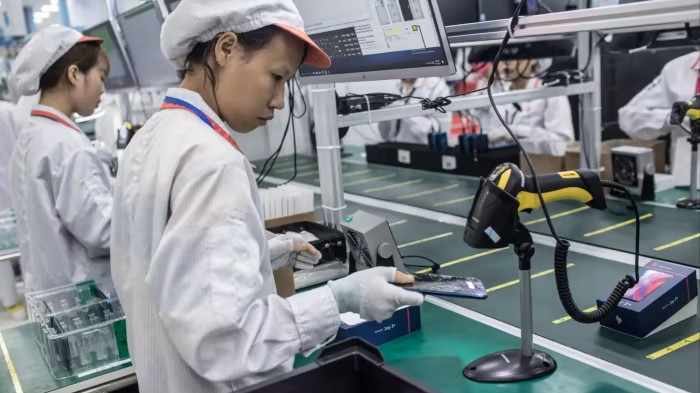Economics class: Vietnam

Roula Khalaf, Editor of the FT, selects her favourite stories in this weekly newsletter.
This article is part of the Financial Times free schools access programme. Details/registration here.
Read our full range of economics picks here.
Specification:
The Global Economy: Vietnam
In A-level economics it is essential to provide examples, particularly for Theme 4 ‘The Global Economy’. Students are encouraged to have a good understanding of countries at different stages of economic development. They should demonstrate knowledge and understanding of strategies that promote growth and development. Using examples in written responses will add depth and value, particularly in the essay section, and gain credit with examiners.
Vietnam
Vietnam is a good example of a country undergoing rapid growth. A war-torn country in the 1960s and 1970s, it subsequently experienced significant economic growth and development, especially from the mid-1980s. It followed an export-led growth strategy. Since 2000, gross domestic product a head has risen rapidly from $396 to $4,164 in 2022, according to the World Bank. Economic growth in 2022 was 8 per cent.
World Bank economic data: Vietnam
The country has a population of 98mn, and the economy enjoys low inflation (3.2 per cent) coupled with low unemployment (1.9 per cent) and an improving current account. Development indicators showing rapid improvement include 100 per cent of the population with access to electricity and 74 per cent to the internet. It has built airports, ports, motorways and high-speed rail.
A 2018 World Bank Report praised Vietnam for its education system, with 98 per cent of children attending primary school and 85 per cent in lower secondary school. The numbers attending university have also grown rapidly. This has helped develop the skill base it needs. The human development index increased between 1990 and 2019 by 46 per cent, one of the highest rates in the world, to 0.704. It places Vietnam in the high human development category.
Education in Vietnam: very good on paper
Underlying these developments has been a shift from a centrally planned economy to one that is more market-based, with a range of industries now providing employment for its citizens. While traditional industries such as mining, agriculture, forestry and fishing employ about 40 per cent of the workforce, there has been significant recent growth in high-tech industries such as mobile communications.
Observatory of Economic Complexity: Vietnam
The development of manufacturing and services is a sure sign of economic development. The service sector now accounts for 30 per cent of GDP. The company VinFast is eager to develop a presence in the electric vehicle market, with the capacity to produce a quarter of a million vehicles a year.
The carmaker from Vietnam looking to take on Tesla
Vietnam has a young workforce with 49.5 per cent aged 15-39. The country has a number of free trade agreements, including membership in Asean and the CPTPP. Vietnam is currently attracting substantial foreign direct investment from tech companies including Apple and Google, which want to develop supply chains outside China due to growing tensions between Washington and Beijing.
Vietnam tops tech growth market index
Although there is still a need to expand infrastructure close to ports to create further investment opportunities, many observers argue that Vietnam’s economic moment has come.
Vietnam’s economic moment has arrived
Vietnam becomes vital link in supply chain as business pivots from China
Vietnam aims to become a high-income country by 2050 with per capita income of $27,000-$32,000. This would require annual growth of 6.5-7.5 per cent. To maintain this momentum, a number of challenges remain, notably in developing infrastructure and cracking down on corruption.
Vietnam must take ‘aggressive’ action to meet growth goals, says finance minister
In the long term the country will not only need to develop infrastructure but continue to improve education, attract FDI, develop its financial system, create more opportunities for companies to compete in an open market and develop economic institutions and regulations. Becoming a high-income country by 2050 is not easy in an ever-changing global economy.
Questions:
Explain the difference between economic growth and economic development
Using the extract explain the term free trade agreements
Using the article identify interventionist drivers of growth and development
Using the article identify market-orientated drivers of growth and development
“The education system is the main driver of growth and development in Vietnam.” Evaluate this statement
John Greenwood, Bromley High School for Girls
Comments